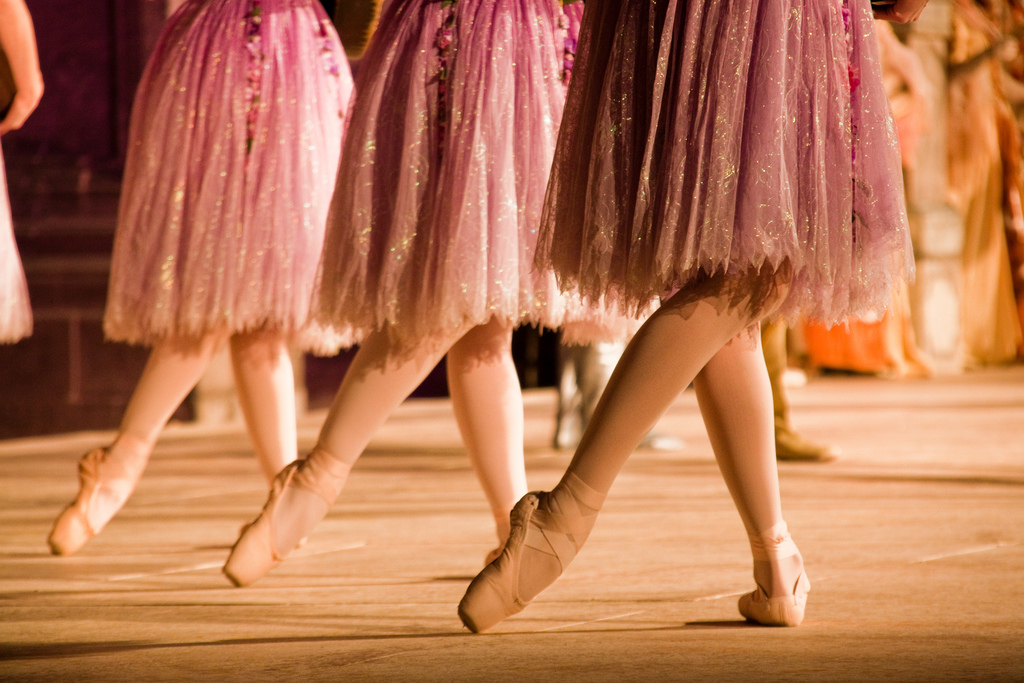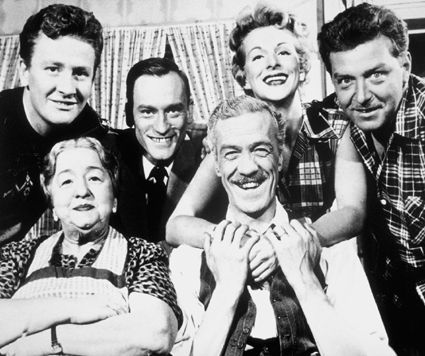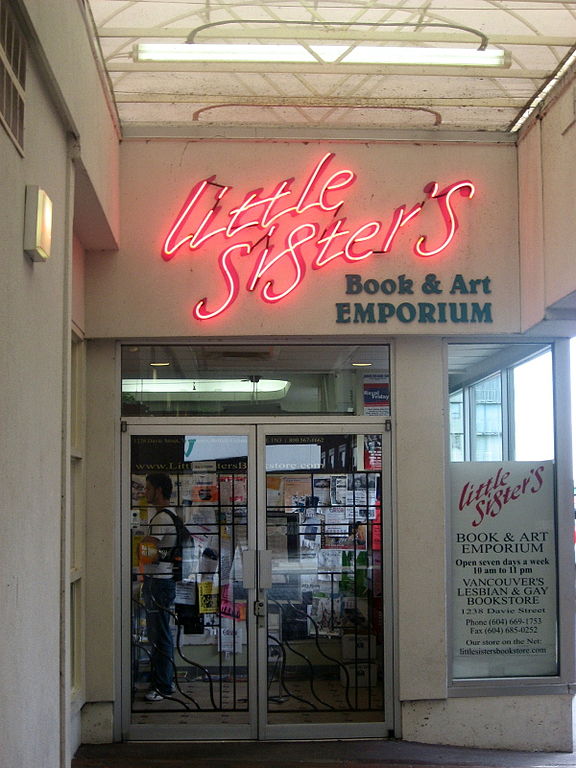Browse "Arts & Culture"
-
Article
Les Grands Ballets Canadiens de Montréal
Founded in 1957 by Ludmilla Chiriaeff, Les Grands Ballets Canadiens de Montréal is the most progressive and experimental of Canada’s three big ballet troupes (the National Ballet of Canada and the Royal Winnipeg Ballet being the other two). It is noted for a diverse repertoire that has emphasized new works as well as traditional 19th-century story-ballets and 20th-century classics. The company has also had a strong record of commissioning original works that are often choreographed, composed and designed by Canadians (see also Dance in Canada).
"https://d2ttikhf7xbzbs.cloudfront.net/media/media/2c8c21e8-3341-47e3-b689-1198a01f9081.jpg" // resources/views/front/categories/view.blade.php
https://d2ttikhf7xbzbs.cloudfront.net/media/media/2c8c21e8-3341-47e3-b689-1198a01f9081.jpg
-
Article
Les Invasions barbares (The Barbarian Invasions)
Denys Arcand’s sad and funny follow-up to his acclaimed Le déclin de l’empire américain (1986), Les Invasions barbares is one of the most honoured Canadian films of all time.
"https://development.thecanadianencyclopedia.ca/images/tce_placeholder.jpg?v=e9dca980c9bdb3aa11e832e7ea94f5d9" // resources/views/front/categories/view.blade.php
https://development.thecanadianencyclopedia.ca/images/tce_placeholder.jpg?v=e9dca980c9bdb3aa11e832e7ea94f5d9
-
Article
Les Petits chanteurs à la Croix de Bois
Les Petits chanteurs à la Croix de Bois. A 100-voice choir of men and boys founded 22 Nov 1933 by Henri Vermandere (Brother Séverin; b Courtrai, Belgium, 17 May 1904) with the assistance of his brother Joseph Vermandere.
"https://development.thecanadianencyclopedia.ca/images/tce_placeholder.jpg?v=e9dca980c9bdb3aa11e832e7ea94f5d9" // resources/views/front/categories/view.blade.php
https://development.thecanadianencyclopedia.ca/images/tce_placeholder.jpg?v=e9dca980c9bdb3aa11e832e7ea94f5d9
-
Article
Les Petits chanteurs de Granby
Les Petits chanteurs de Granby. Choir school of about 100 children's and men's voices. It was founded in 1931 in Granby (60 km east of Montreal) by Brother Julien Hamelin of the Frères du Sacré-Coeur. The ensemble enjoyed the official patronage of the city.
"https://development.thecanadianencyclopedia.ca/images/tce_placeholder.jpg?v=e9dca980c9bdb3aa11e832e7ea94f5d9" // resources/views/front/categories/view.blade.php
https://development.thecanadianencyclopedia.ca/images/tce_placeholder.jpg?v=e9dca980c9bdb3aa11e832e7ea94f5d9
-
Article
Les Petits chanteurs de Trois-Rivières
Les Petits chanteurs de Trois-Rivières. Boys' choir, to which a few men's voices are added, founded in 1947 by J.-P. Quinty and J. Dugré, two Rover Scouts of the Comtois clan of Trois-Rivières.
"https://development.thecanadianencyclopedia.ca/images/tce_placeholder.jpg?v=e9dca980c9bdb3aa11e832e7ea94f5d9" // resources/views/front/categories/view.blade.php
https://development.thecanadianencyclopedia.ca/images/tce_placeholder.jpg?v=e9dca980c9bdb3aa11e832e7ea94f5d9
-
Article
Les Petits chanteurs du Mont-Royal
Les Petits chanteurs du Mont-Royal. Choir and choir school which exists primarily to provide the musical portion of the religious ceremonies at Saint Joseph's Oratory on Mount Royal, Montreal.
"https://development.thecanadianencyclopedia.ca/images/tce_placeholder.jpg?v=e9dca980c9bdb3aa11e832e7ea94f5d9" // resources/views/front/categories/view.blade.php
https://development.thecanadianencyclopedia.ca/images/tce_placeholder.jpg?v=e9dca980c9bdb3aa11e832e7ea94f5d9
-
Article
Les Plouffe
Les Plouffe (1948), a novel by Roger Lemelin in which the author's expansive comic gift offers an insider's view of Québec's working-class Lower Town district.
"https://d2ttikhf7xbzbs.cloudfront.net/media/media/de21d9be-6b21-4fce-955e-0aabf8e66ca0.jpg" // resources/views/front/categories/view.blade.php
https://d2ttikhf7xbzbs.cloudfront.net/media/media/de21d9be-6b21-4fce-955e-0aabf8e66ca0.jpg
-
Article
Les Plouffe
Roger LEMELIN's famous novel, LES PLOUFFE, had already been serialized for radio in 1952 before being made into the first, and hugely successful, téléroman (1953-59) for Québec television. The story of the Plouffe family became deeply woven into the fabric of Québec popular culture.
"https://development.thecanadianencyclopedia.ca/images/tce_placeholder.jpg?v=e9dca980c9bdb3aa11e832e7ea94f5d9" // resources/views/front/categories/view.blade.php
https://development.thecanadianencyclopedia.ca/images/tce_placeholder.jpg?v=e9dca980c9bdb3aa11e832e7ea94f5d9
-
Article
Les Triplettes de Belleville
Les Triplettes de Belleville (2003) is a strange, heartbreaking, life-affirming, thoroughly French feature-length animated movie.
"https://development.thecanadianencyclopedia.ca/images/tce_placeholder.jpg?v=e9dca980c9bdb3aa11e832e7ea94f5d9" // resources/views/front/categories/view.blade.php
https://development.thecanadianencyclopedia.ca/images/tce_placeholder.jpg?v=e9dca980c9bdb3aa11e832e7ea94f5d9
-
Article
Literature in English: Language and Literary Form
This article offers an overview of the history and development of Canadian English literature from the mid-20th to present day, including several of its early influences from various other languages.
"https://development.thecanadianencyclopedia.ca/images/tce_placeholder.jpg?v=e9dca980c9bdb3aa11e832e7ea94f5d9" // resources/views/front/categories/view.blade.php
https://development.thecanadianencyclopedia.ca/images/tce_placeholder.jpg?v=e9dca980c9bdb3aa11e832e7ea94f5d9
-
Article
Little Sister’s Book and Art Emporium
Little Sister’s Book and Art Emporium has long served as a source of 2SLGBTQ+ literature in Vancouver. Founded by Bruce Smyth and his partner Jim Deva in 1983, the bookstore has also been a social and political focal point for the communities it serves. As Deva has asserted, “More than anything else, Little Sister’s represents the power of community.” This power drove Little Sister’s decades-long legal battle with Canada Customs over censorship and the seizure of imported gay literature.
"https://d2ttikhf7xbzbs.cloudfront.net/media/media/576px-Little_Sister_s_Book_and_Art_Emporium.jpg" // resources/views/front/categories/view.blade.php
https://d2ttikhf7xbzbs.cloudfront.net/media/media/576px-Little_Sister_s_Book_and_Art_Emporium.jpg
-
Article
Longhouse
A longhouse was the basic house type of pre-contact northern Iroquoian-speaking peoples, such as the Huron-Wendat, Haudenosaunee, Petun and Neutral. The longhouse sheltered a number of families related through the female line. In the 1700s, European-style single-family houses gradually replaced longhouses as primary residences. However, longhouses still function as important facilities in which some Indigenous peoples conduct ceremonies, political meetings and various community gatherings. (See also Architectural History of Indigenous Peoples in Canada.)
"https://d2ttikhf7xbzbs.cloudfront.net/media/media/c78ecb73-d7ac-4834-bc1e-a6d6bf206331.jpg" // resources/views/front/categories/view.blade.php
https://d2ttikhf7xbzbs.cloudfront.net/media/media/c78ecb73-d7ac-4834-bc1e-a6d6bf206331.jpg
-
Editorial
A Place to Happen
The following article is an editorial written by The Canadian Encyclopedia staff. Editorials are not usually updated.It has been said that Canadians don’t tell our own stories or celebrate our own myths. Our history is full of epics considered “too small to be tragic,” as The Tragically Hip’s Gord Downie once sang.
"https://d2ttikhf7xbzbs.cloudfront.net/media/Twitter_Cards/The hip 2.jpg" // resources/views/front/categories/view.blade.php
https://d2ttikhf7xbzbs.cloudfront.net/media/Twitter_Cards/The hip 2.jpg
-
Article
Loup-Garou
Traditional tales about the Loup-Garou are found in French Canadian and European folklore. The Loup-Garou is also called lycanthrope or werewolf. A Loup-Garou is generally believed to a person who can change into animal form, often as a wolf. In French Canadian folklore, the Loup-Garou is often a dog. It may also take the form of a calf or small ox, a pig, a cat or even an owl. See also Oral Literature in French.
"https://development.thecanadianencyclopedia.ca/images/tce_placeholder.jpg?v=e9dca980c9bdb3aa11e832e7ea94f5d9" // resources/views/front/categories/view.blade.php
https://development.thecanadianencyclopedia.ca/images/tce_placeholder.jpg?v=e9dca980c9bdb3aa11e832e7ea94f5d9
-
Article
Maisie Hurley
Maisie Hurley, née Maisie Amy Campbell-Johnston, Vancouver-area political activist, Indigenous ally (see Indigenous Peoples in Canada), newspaper founder and art collector (born 27 November 1887 in Swansea, Wales; died 3 October 1964 in North Vancouver, British Columbia). Although Hurley had no formal legal training or law degree (see Legal Education), she worked on several legal cases and advocated for Indigenous peoples’ basic human rights as well as for changes to the Indian Act. In 1946, Hurley started a newspaper called The Native Voice that aimed to bring attention to important issues concerning Indigenous communities across Canada (see Rights of Indigenous Peoples in Canada). In 2011, Hurley’s collection of Indigenous art was displayed at the North Vancouver Museum.
"https://d2ttikhf7xbzbs.cloudfront.net/Untitled-11.jpg" // resources/views/front/categories/view.blade.php
https://d2ttikhf7xbzbs.cloudfront.net/Untitled-11.jpg
